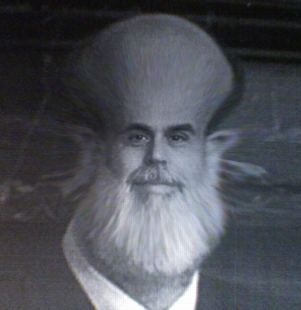
Starting in mid 2009, six months after the Fed managed short-term interest rates to close to zero, every very few months the Fed makes noises about raising interest rates or an article appears in the business media that makes the case for Fed tightening. Consider the Oct. 19, 2009 Barron's cover ``C'mon, Ben'' that admonished Bernanke to abondon the ultra-low rate policy and raise short-term interest rates "to a more normal 2% -- or risk fostering another financial bubble."
It takes more than beer to make a party and more than low interest rates to get an asset bubble going. It needs a catchy theme like the New Economy of the technology bubble era, a guest list of hopeful suckers, and a source of funding such as Venture Capital. Someone has to send out invitations, as the National Association or Realtors did during the housing bubble, and someone else has to publicize the event the way the business media did during both recent bubbles. Without the whole package, no bubble.
The Japanese can tell you all about it. The Bank of Japan dropped interest rates to near zero in 1995. Fifteen years later there's no new bubble in sight.
A mere 18 months into zero interest rate policy or ZIRP, the risk of a new bubble should be the least of our concerns. Managing asset prices up in the FIRE Economy without producing commodity price inflation in the Productive Economy is the primary challenge for U.S. monetary policy going forward. It's like trying to barbecue steak inside a meat locker. Sooner or later it's all smoked meat.
Another rate hike false alarm
Yesterday, Bernanke issued a statement that at first blush looks like a change in the Fed's interest rate posture.
Fed Chairman Bernanke focussed on the state of the real economy with respect to normalising monetary policy, in a question-and-answer session at the Woodrow Wilson International Scholars dinners yesterday evening. He indicated that the FOMC would not wait for a sizeable decline in the unemployment rate or for a significant increase in inflation before raising its policy rate: "We can't wait until unemployment is where we'd like it to be, we can't wait until inflation gets out of control before we begin the process of normalizing interest rates." He said that the economic recovery remains "moderate" and that "the unemployment rate is going to be high for a while". However, he noted good momentum in consumer spending and business investment, saying: "There are some signs that the private sector is picking up the baton and moving the economy forward."
On the fiscal issues facing the southern European economies, Mr Bernanke said the Fed was watching the situation "very closely" and that the EUR440bn would cover the needs of those economies affected "for a number of years". On the US fiscal situation, he commented that: "The recession is too deep, the loss of tax revenue is too great, and the spending to try to support the economy and the financial system too large."
We seriously doubt the Fed won't wait to raise rates until more voters have jobs. The relevant charts that show the relationship between unemployment and Fed rate policy are:On the fiscal issues facing the southern European economies, Mr Bernanke said the Fed was watching the situation "very closely" and that the EUR440bn would cover the needs of those economies affected "for a number of years". On the US fiscal situation, he commented that: "The recession is too deep, the loss of tax revenue is too great, and the spending to try to support the economy and the financial system too large."
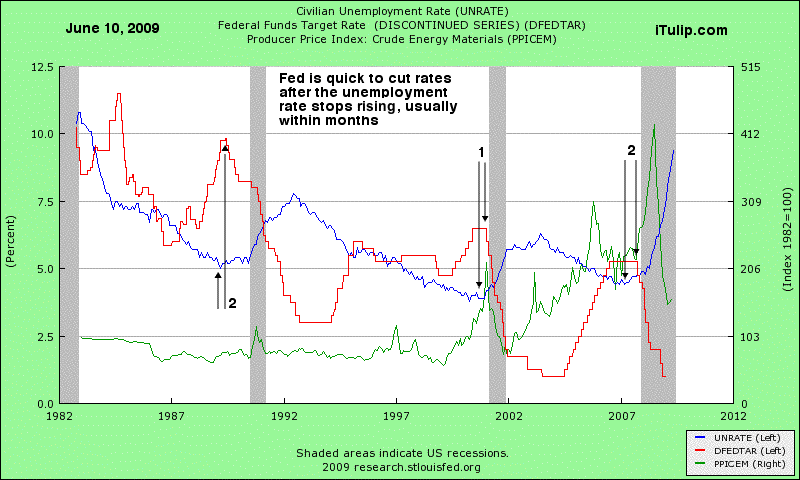
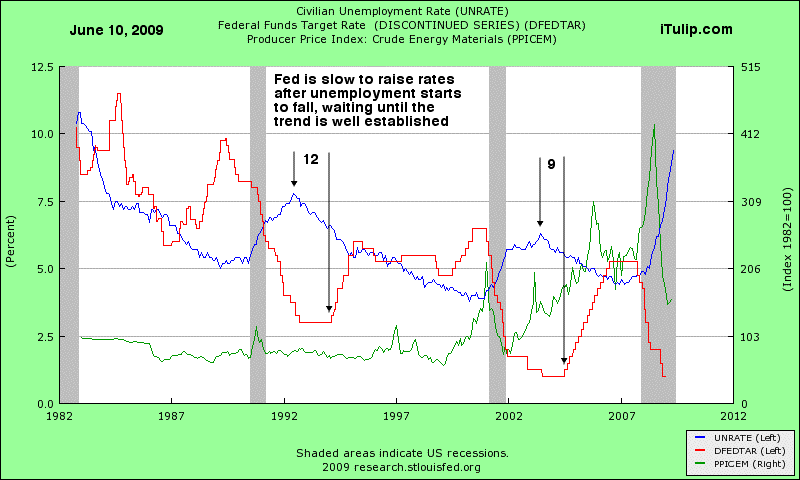
For the past two recessions, the Fed waited until six to 12 months after unemployment fell
before starting to raise rates
1983 was the exception that proves the rule. After years of inflation it took very high interest rates to convince the bond vigilantes that the Fed was serious about killing off inflation. To drive the point home, the Fed raised rates as soon as unemployment started to turn around.
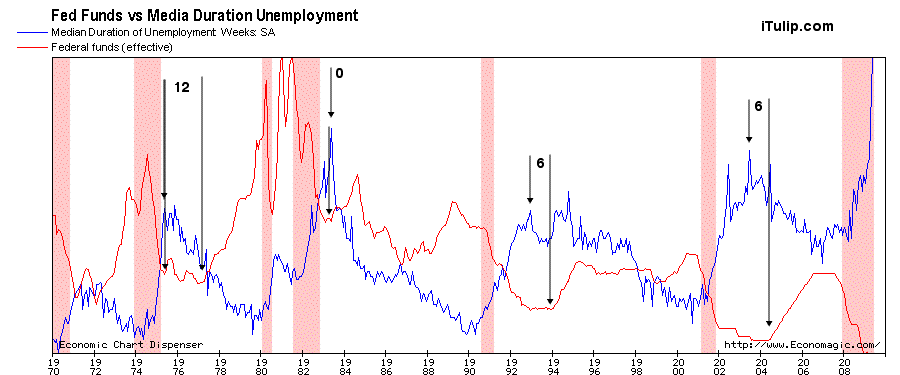
The one exception to the rule was in 1983; after years of high inflation the Fed raised rates coincident with
the beginning of a decline in unemployment
Will the Fed make an exception this time? We don't need to belabor the fact that we are not exiting a period of years of double digit inflation. That leaves us to consider the unemployment picture. Is the economy at risk of a sudden surge in demand-driven inflation from a surging labor market?
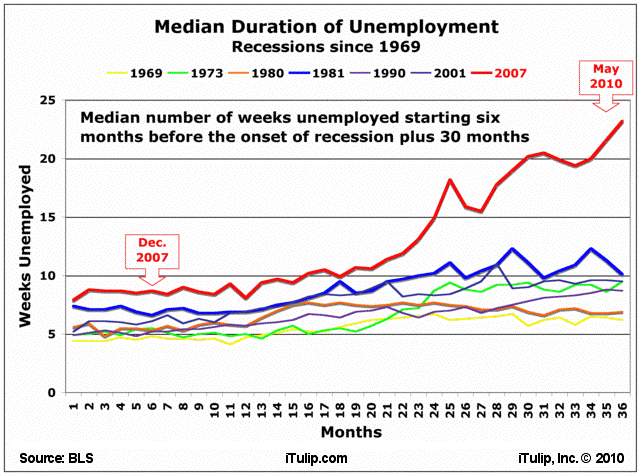
Unemployment continues to rise: not a prescription for rising interest rates
If the Fed intended to change the rules and raise rates before unemployment declined for six to nine months, they'd not likely do so when unemployment remains weaker than during any recovery over the past seven recessions. The only argument for breaking the rule is if inflation expectations are rising far more quickly than during previous recoveries. So far, that has not been the case.
Two Roads to Failure
The Fed has two ways to re-crash the reflated and not yet self-sustaining economy:
1) Raise interest rates before the FIRE Economy recovers
2) Fail to raise interest rates before inflation begins to cut off real growth in the Productive Economy
The Fed will talk about raising rates but will not raise rates for at least another year. Here's the scenario for raising rates a year from now.
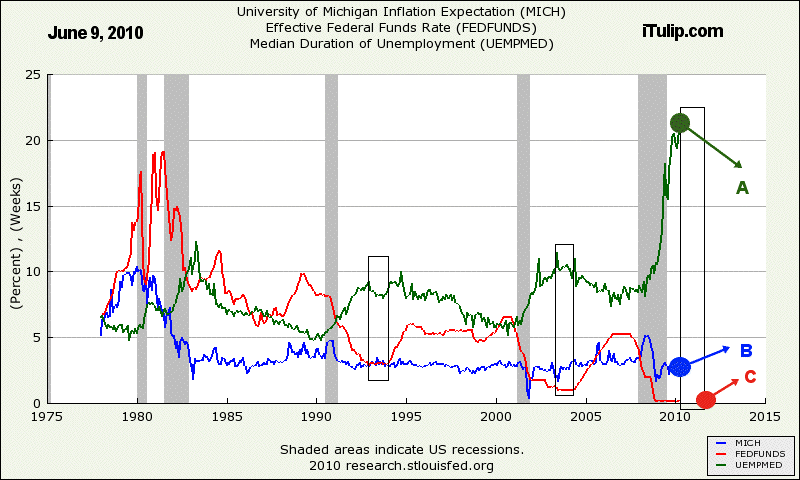
If unemployment begins to decline from May 2010 levels A, and if inflation expectations continue to climb as they have since Sept. 2009 B, then the Fed may raise rates a year from now C.
Considering the extraordinarily high starting point of unemployment, the risk of inflation pressures from primary demand seem exceedingly low. Duration of unemployment needs for fall precipitously for many years to reach the 10 week level that signaled to the Fed that the economy no longer needed ultra-low rates. Recall that the housing bubble produced the rise in employment that relieved the labor markets after the tech bubble crash. Without a Next Bubble, where will the labor demand come from this time?
Even if these events do occur, there's still the FIRE Economy, especially the nationalized housing market, for the Fed to worry about. Even a modest rise in mortgage rates will slam the housing market.
Finally, consider Bernanke's comments on the deficit. If the Fed raises rates too soon and crashes the economy, guess what happens to the deficit when tax revenues decline even more than they have, even if outlays are not broadened to rescue the next wave of unemployed voters? When the IMF announces austerity plans for over-indebted countries from Argentina in 2000 to Greece in 2010, it's a firing gun for capital flight; when the Fed announces rate hikes when unemployment remains above 9% and 40 million Americans are on food stamps, guess what happens to the capital that had been previously flowing into the country in search of low risk yield?
As I've been saying, this is not a drill. Our economy is in a horrific bind of multi-generational proportions. The gold market is broadcasting loud and clear what it believes the outcome will be: a debt and currency crisis as governments over-extend themselves in an effort to bail out economies that went into crisis as a result of over-leverage in the private sector. Is the event forecast by Ka-Poom Theory in 1999 and exended by the housing bubble finally upon us?
__________________________________________________
To receive the iTulip Newsletter or iTulip Alerts, Join our FREE Email Mailing List
Copyright © iTulip, Inc. 1998 - 2010 All Rights Reserved
All information provided "as is" for informational purposes only, not intended for trading purposes or advice. Nothing appearing on this website should be considered a recommendation to buy or to sell any security or related financial instrument. iTulip, Inc. is not liable for any informational errors, incompleteness, or delays, or for any actions taken in reliance on information contained herein. Full Disclaimer
 ) (where are the emoticons anyway?)
) (where are the emoticons anyway?)
 ?
?


Comment